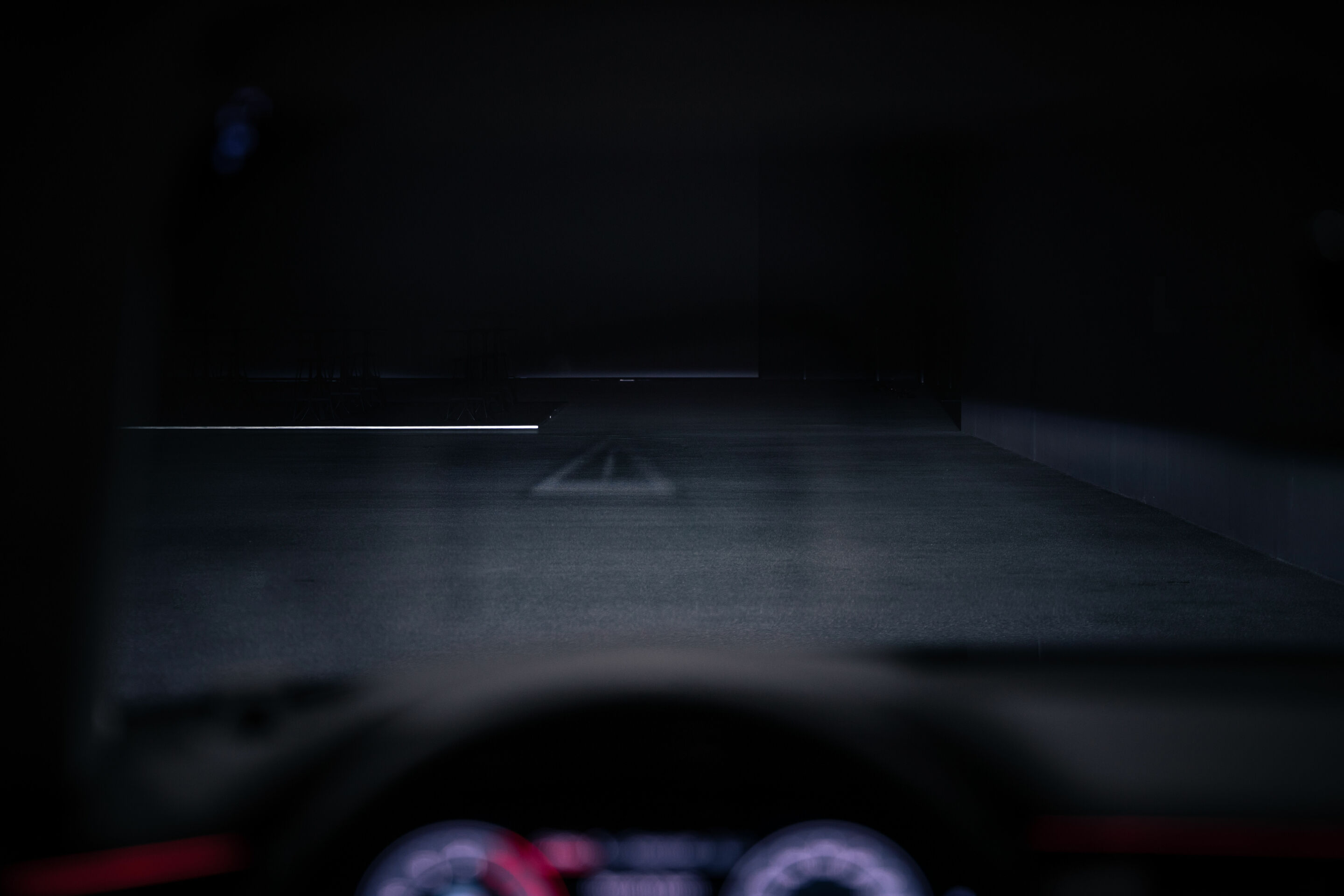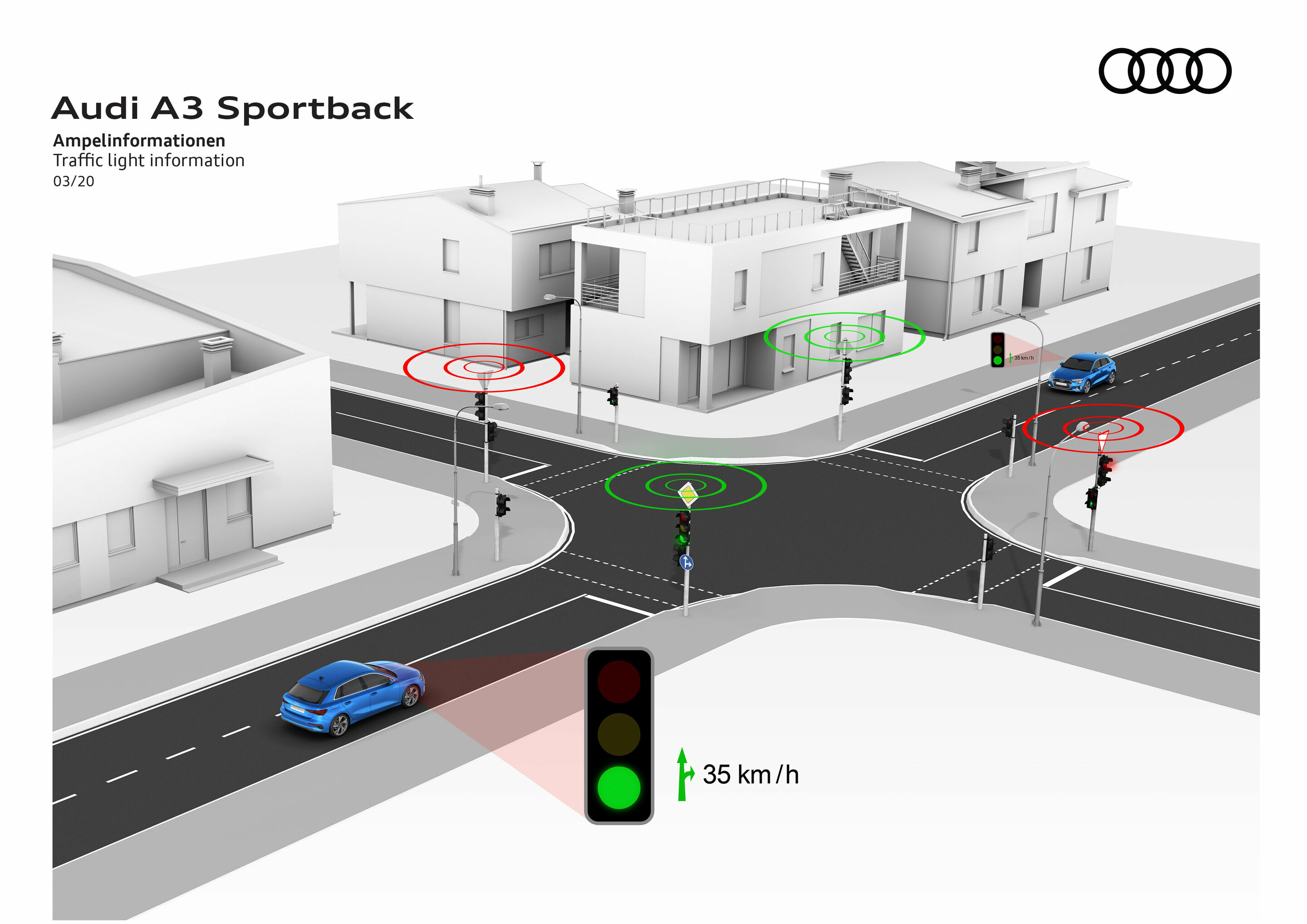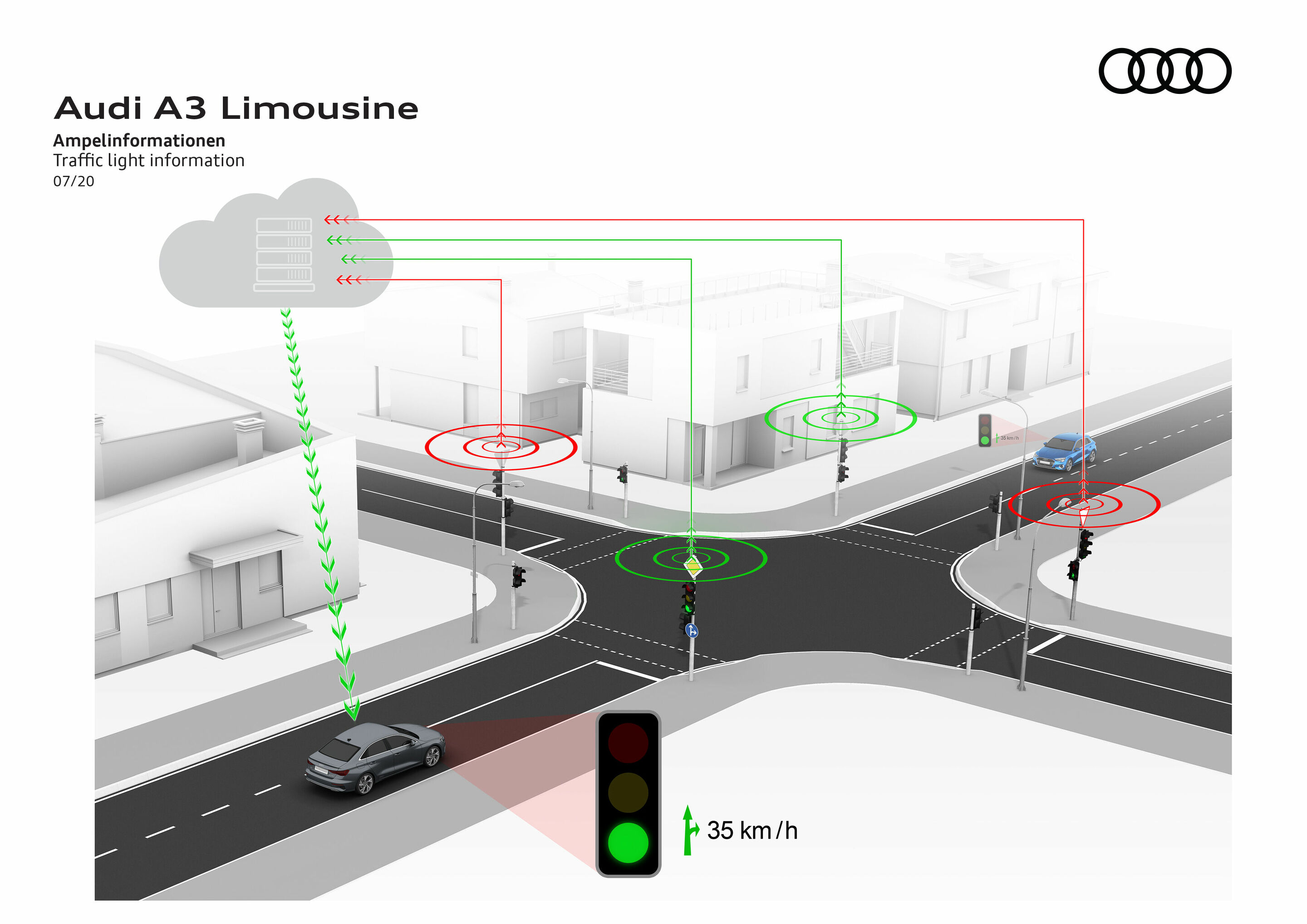Search
All search results for "traffic light"
(188)
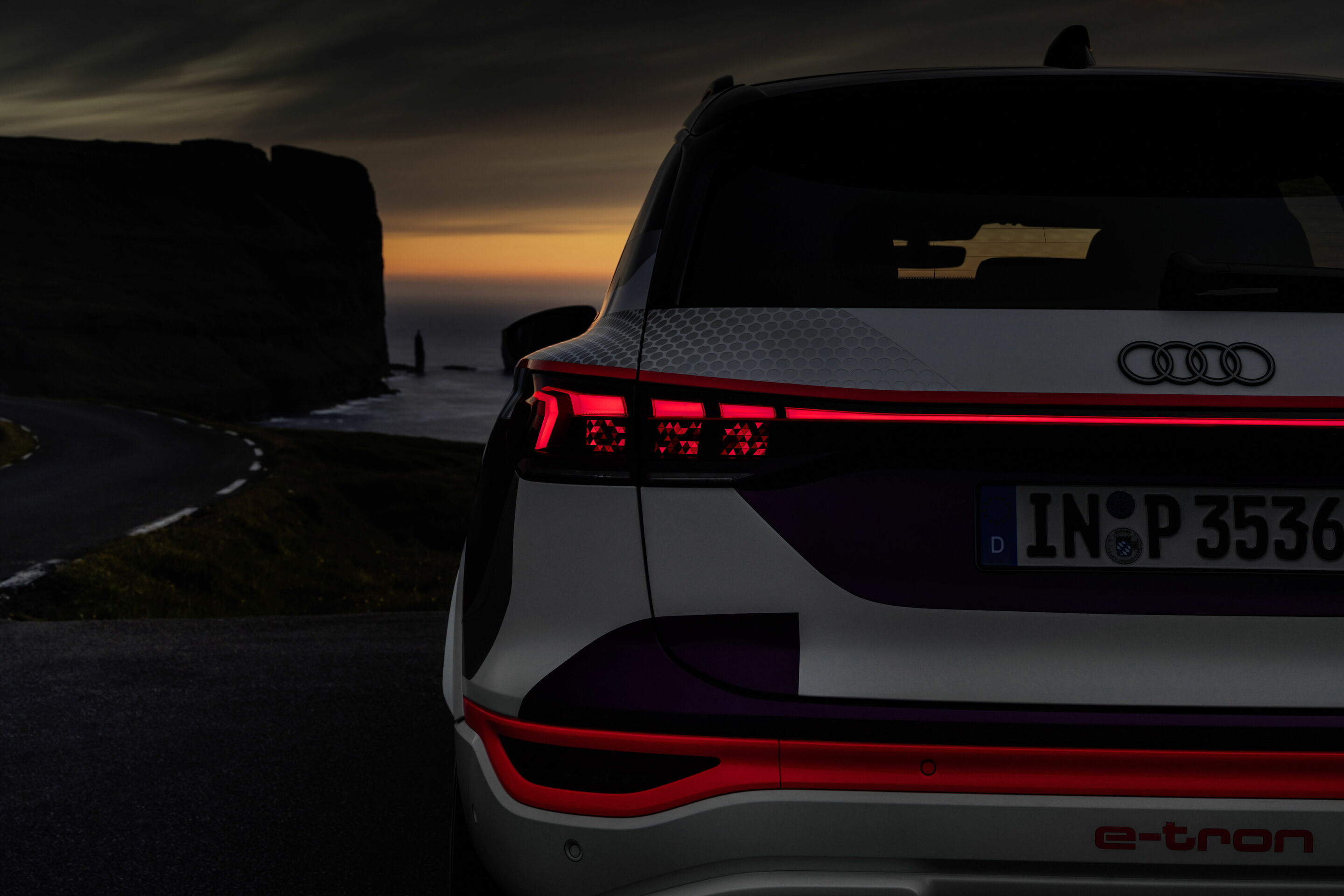 Lighting
Lighting
Depending on its position, the LED light is either directed through lenses onto the road or absorbed to create masked areas. This divides the light into tiny pixels. This technology forms the basis for a wide range of functions, such as the lane light, orientation light, and enhanced traffic information. These innovations support and improve road safety. On highways and country roads, the lane light creates a carpet of light that brightly illuminates the driver’s lane and dynamically adjusts during lane changes. This increases the driver’s focus on the relevant lane and contributes to overall traffic safety. The orientation light uses dark, light-excluded gradients to proactively indicate the vehicle’s position within the lane, supporting the lane centering assistant – especially useful on narrow roads and in construction zones. The marking light is also used in conjunction with the optional night vision assistant. If the system detects pedestrians, the light highlights them, reducing the risk of overlooking people near the roadway. Additionally, the digital matrix LED headlights can generate dynamic coming/leaving home lighting scenarios, which appear as projections on a wall or on the ground. This turns the space in front of the vehicle into a purposefully illuminated stage. When the turn signal is activated, the headlights create a dynamic flashing zone on the corresponding side of the lane light — specifically, the lane light with turn signal indication. The lane light thus reinforces the turn signal by projecting it onto the road ahead. This also provides a clear visual cue to surrounding traffic about the intended lane change. With this feature, Audi increases safety for all road users, especially in heavy traffic.
 “Digital lighting provides added safety”
“Digital lighting provides added safety”
Michael Kruppa, Head of Front Lighting Development, has been responsible for various areas of development at Audi for more than ten years. Together with his development team, he plays a key role in ensuring that an Audi provides the best possible road safety even in poor visibility and darkness. In this interview, he explains what makes good headlights – and what sets the new Audi Q3 apart from the competition when it comes to lighting.
Mr. Kruppa, why are good headlights so important? Michael Kruppa: The rapid onset of darkness and poorer weather conditions, especially now in the fall and winter, pose a greater risk in traffic. On the one hand, as a driver, I want to illuminate the area I’m driving into as well as possible so that I feel safe. On the other hand, it is very important that other road users see me in time. Often, just a few seconds make a crucial difference in avoiding a dangerous situation. Seeing and being seen is the be-all and end-all in road traffic. Good lighting is not just about comfort – it provides a significant boost in safety. It also creates recognition value. At Audi, customers have numerous options to personalize their lighting. Several different digital light signatures, along with matching coming home/leaving home lighting scenarios, can be selected in the MMI. What characterizes intelligent lighting at Audi? Michael Kruppa: Intelligent lighting actively adapts to the driving situation and provides added safety for all road users. The lighting we develop at Audi is designed to prevent glare. Our matrix LED headlights detect vehicles ahead and oncoming traffic and automatically block out light that would blind them. The driver therefore no longer has to operate the high beams manually. This ensures that you always have enough light in front of you, can stay focused for longer, and drive more safely as a result. The most innovative lighting development we currently use in front lighting at Audi are the digital matrix LED headlights.
 Compact class meets Celtic charm: the new Audi Q3 in Scotland
Compact class meets Celtic charm: the new Audi Q3 in Scotland
With intelligent driver assistance systems, lighting technology from the full-size class, and a striking design, the Q3 brings premium standards to the road. A journey through the breathtaking beauty of Scotland reveals just how much character it truly holds.
Scotland, Glasgow. Where the River Kelvin flows into the mighty Clyde, stands the Riverside Museum – an architectural masterpiece that combines movement and history. This is the spot where our road trip begins with a special companion: the new Audi Q3. Its design? Expressive, dynamic, and emotional, with an exciting interplay of sweeping curves and precise lines. From the Riverside Museum, we start our drive into the Scottish Highlands. But first we have to navigate the quirks of a big city that has not always adapted to the demands of modern traffic. In the process, we get to know the new Audi Q3 in all its facets – and how it can support us while driving. Digital companion for every day We get settled into the sporty, elegant seats and immerse ourselves in Glasgow’s urban flair. After just a few minutes, it becomes clear that the new Audi Q3 is much more than a means of transportation – it is a digital companion for everyday life. During a stop in the historic city center, whose roots date back to the 6th century, the park assist plus shows what it can do. It maneuvers the vehicle into even the tightest of spaces with impressive precision. Supported by several ultrasonic sensors and high-resolution cameras, the system recognizes its surroundings in real time and provides clear visual and acoustic feedback – a real advantage when parking in the narrow streets of Scotland’s largest city. Back on the road, the traffic sign recognition system helps the driver keep an overview of things. For example, speed limits and construction zones are reliably detected and projected directly onto the head-up display – this is particularly helpful for those unfamiliar with the area while driving in dense city traffic.
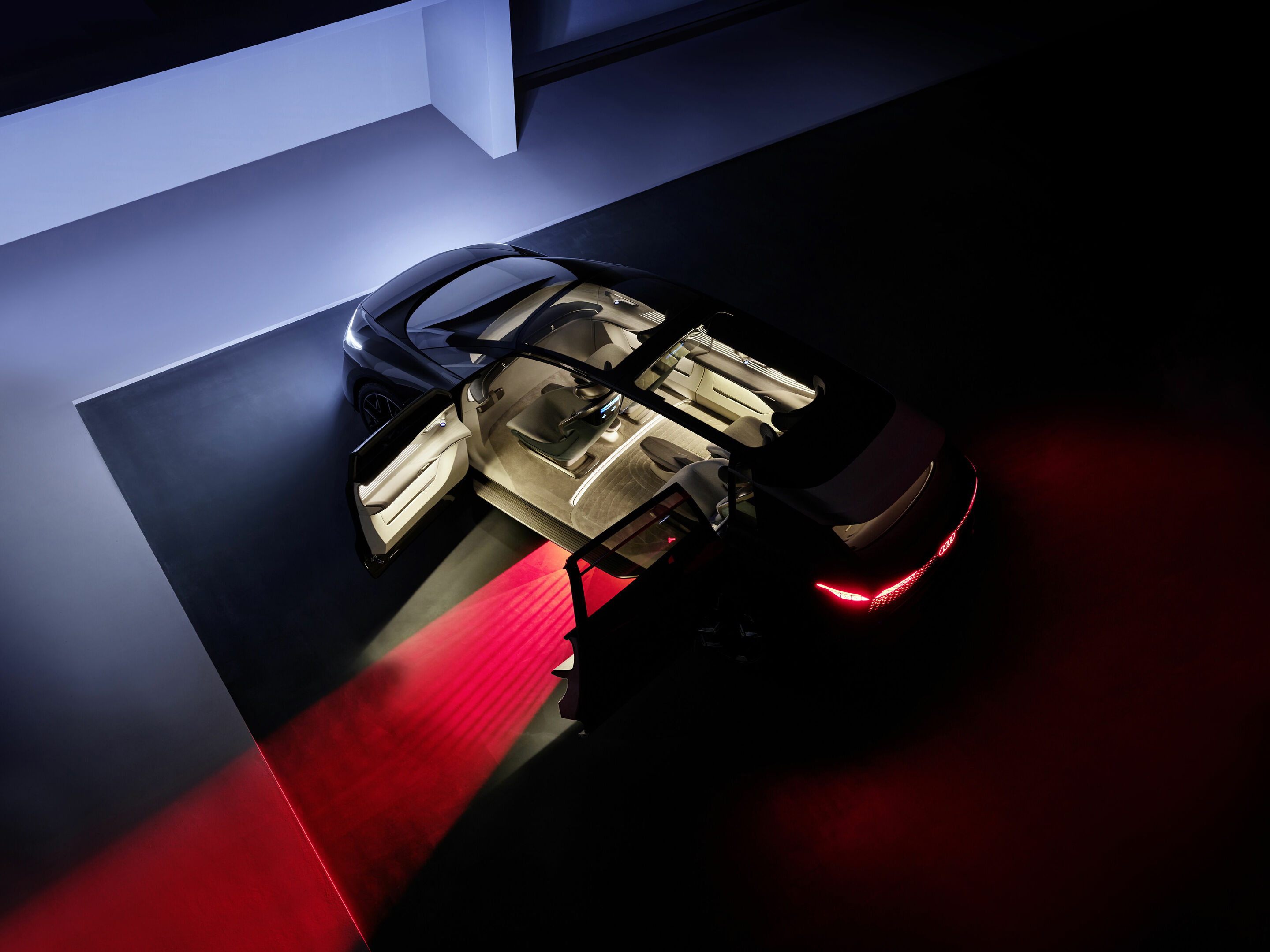 How Audi’s light digitization is pointing the way toward the future
How Audi’s light digitization is pointing the way toward the future
Headlight digitization is blazing new trails in safety, design, and communication Three new functions in Digital Matrix LED headlights that enhance safety and improve the customer experience Digitizing light technology opens up new possibilities and individualization
Audi TechFocus Newsletter #03
Safety and customer satisfaction come first at Audi. They are part and parcel of the success of the company with the four rings. In that context, light technology is steadily growing more important and creating a wider range of possibilities and perspectives, from added safety for the driver, to external communication and individualization. Systematic light digitization is making all of this possible. It is particularly visible in the new Audi A8: the forward-looking Digital Matrix LED headlights and digital OLED rear lights raise the customer experience to a whole new level: for the first time in any Audi model, light is completely digitized. The car can be individualized even further through its digital OLED rear lights. The Digital Matrix LED headlights also include three new functions: advanced traffic information, a lane light with direction indicator lights on highways, and an orientation light on country roads. These features not only demonstrate Audi’s “Vorsprung durch Technik,” they also add value.
“Lighting technology and lighting design have been success factors for our brand for decades, becoming a key area for Audi. This has allowed us to continue setting new benchmarks in the automotive industry,” explains Oliver Hoffmann, board member for Technical Development. “The digitization of lighting enables us to offer completely new functions that we can use to increase safety again significantly. For example, in combining the digital OLED taillights with proximity indication, we can communicate with the outside world depending on the situation.
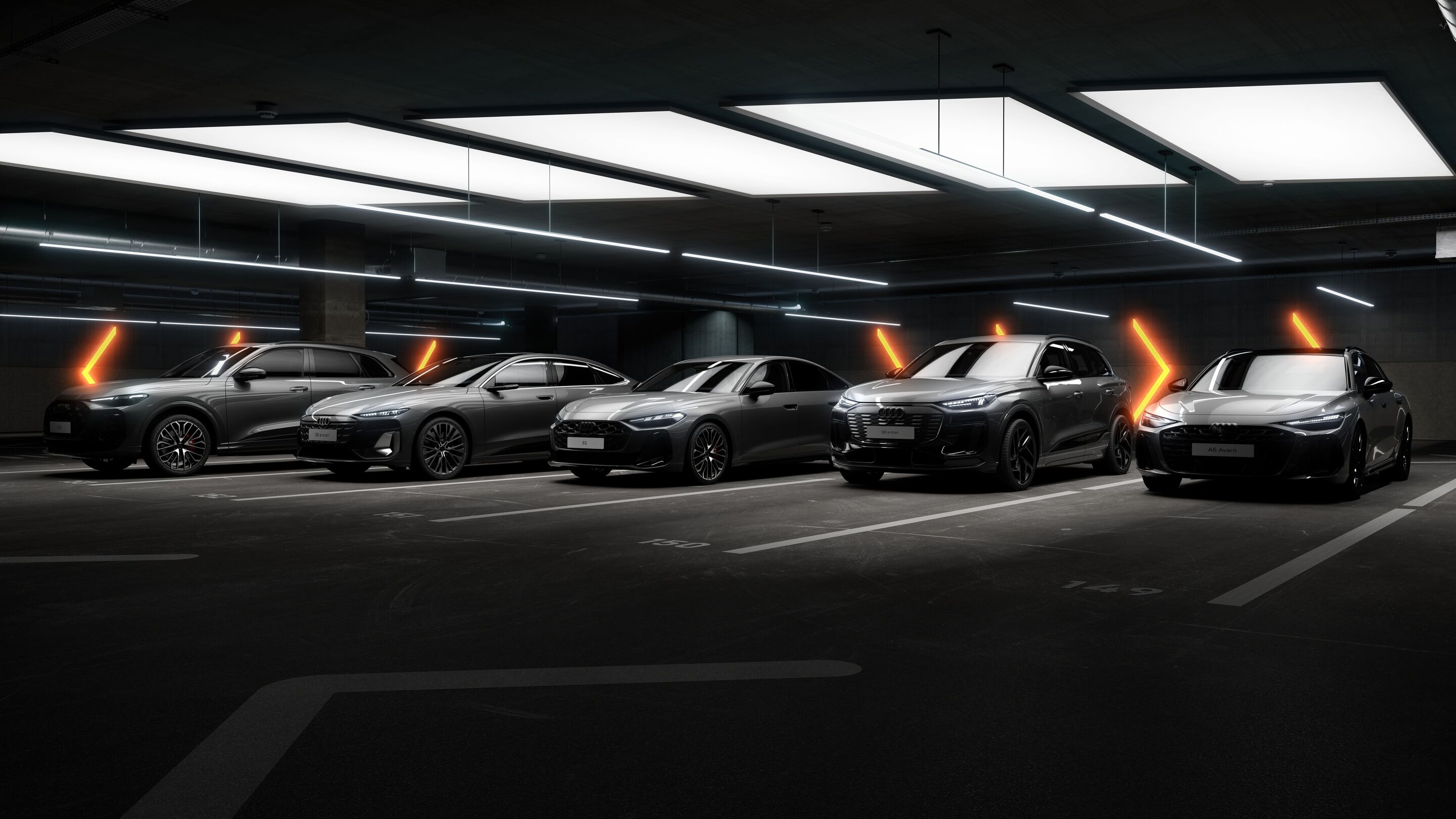 Updates for five Audi model series: more emotion, comfort, and features in store
Updates for five Audi model series: more emotion, comfort, and features in store
The special Dynamic Plus screen in the driver's display enhances the driving experience with shift lights, a round tachometer, and detailed sports displays. The result is maximum lateral dynamics, precise traction, and a driving experience that allows for targeted oversteer and controlled drifts – for pure driving enjoyment combined with maximum control and safety. Furthermore, the Audi drive select assistant will also be available. When activated, this function automatically adjusts the drive select mode to suit the driver’s individual driving style and the respective driving situation. Audi is also increasing the efficiency of the electric PPE models and improving regenerative braking: the vehicles can now decelerate to a standstill without transitioning to conventional friction brakes. This makes stopping particularly smooth and even more comfortable. The additional kinetic energy recovered is used for energy regeneration, improving efficiency and range. Driver assistance: more safety, more comfort An advanced form of adaptive cruise assist will be available in several markets. The system not only keeps the vehicle in its lane as long as the driver’s hands remain on the wheel, but now also supports lane changes initiated by the driver on the highway. Where possible, the driver can initiate assisted lane changes by activating the turn signal; the vehicle then steers into the desired lane. Even greater safety and comfort in city traffic is provided, for instance, by traffic sign recognition. When activated, the vehicle autonomously adjusts its speed according to the traffic signs. The car also recognizes stop signs, warning signs for uneven road surfaces, and right-of-way rules based on the information stored in the route data and can thus automatically reduce its speed as required. As part of the model year change, Audi is also expanding the parking and maneuvering functions in the optional park assist pro.

With the second generation of digital OLED rear lights, the Audi A6 e-tron is taking light design, range of functions, and road safety to a new level. With these innovations, the A6 e-tron is the leader in its class in the field of advanced lighting technology. The active digital light signature, a world first introduced with the Audi Q6 e-tron, makes a new and vibrant impression, pointing the way to the future of lighting technology at Audi. The second generation of digital OLED technology shapes the appearance of the new Audi A6 e-tron and significantly increases its range of functions. This technology significantly improves road safety, as impressively demonstrated by the communication light in the digital OLED rear lights. Audi is also underscoring its leading role in personalization: With eight digital light signatures in the redesigned digital daytime running lights in the Matrix LED headlights and in the digital OLED rear lights 2.0, drivers can customize the appearance of their A6 e-tron to suit their personal taste. These customizations are easy to make via the MMI or the myAudi app. Active digital light signature: harmony in motion Headlights and rear lights that appear alive at first glance: This is how customers can think of the active digital light signature. “We’ve given the light signatures their own personality and the digital world its own aesthetics at the same time,” explains César Muntada, Head of Lighting Design. The second-generation digital OLED rear lights have ten 450-segment OLED panels that use a specially developed algorithm to generate a new image several times a second. This allows the active digital light signature to demonstrate the car’s vibrancy and ability to interact by making the “brain waves” of the A6 e-tron visible through constant movement. A software module on one of the domain computers of the Audi A6 e-tron makes this type of light signature possible.
 Lighting technology
Lighting technology
With the new A5 models, Audi is underlining its leading role in lighting design and technology in its class. The new active digital light signature was introduced with the Audi Q6 e-tron and is now available for the Audi A5 family. It gives onlookers a new impression of vibrancy and points the way to the future of Audi lighting technology. The optional digital OLED technology extends the range of functions many times over. This significantly contributes to road safety, as demonstrated by the communication light in the digital OLED combination rear lights. The second-generation digital OLED combination rear lights take the new A5 family to the next level in terms of lighting design, functionality, and road safety. The Audi A5 also sets new standards in terms of personalization. With eight selectable digital light signatures included with the optional Matrix LED headlights and the top-of-the-range digital OLED rear lights 2.0, customers can design the appearance of their A5 according to their preferences. This customization can be easily done via the Audi MMI touch display and demonstrated via the myAudi app. "Audi recognized the potential for using OLED technology in rear lights at an early stage and is the only car manufacturer to have consistently developed and digitalized this lighting technology," says Stephan Berlitz, Head of Lighting Development. "Digital OLEDs are more efficient, lighter, and more homogeneous than conventional lighting systems," he continues, giving a glimpse into the future: "Due to their strong contrast, they will gradually become exterior displays and thus an essential enabler for communication with the surroundings.

World premiere: The active digital light signature sets headlights and rear lights in motion in an unprecedented way For the first time, customers can select digital light signatures for the headlights and rear lights via the MMI and the myAudi app Package with digital light signatures available on demand
This innovation will permanently change automotive light design and car-to-X communication: With second-generation digital OLED rear lights, the Audi Q6 e-tron is taking light design, range of functions, and road safety to a new level. Audi is gradually developing the technology into intelligent displays that can communicate with other road users by displaying information via the exterior lights – this is the new communication light. The active digital light signature is another world first making its debut in the Audi Q6 e-tron. It makes an entirely new and vibrant impression, pointing the way to the future of Audi lighting technology. For the first time, customers can optionally select digital light signatures for this new evolution of digital daytime running lights in the Matrix LED headlights and the new generation of digital OLED rear lights. In addition, customers may book digital light signatures on demand.
The Q6 e-tron not only marks a new chapter in electromobility at Audi; lighting technology is an important part of Audi’s DNA. With the world’s first active digital light signature, the Audi Q6 e-tron ushers in a new era characterized by distinctive design and aesthetics unique to Audi. The second-generation of digital OLED technology shapes the look of new Audi models and increases their range of functions many times over. This, in turn, improves road safety, as impressively demonstrated by the communication light in the digital OLED rear lights.


